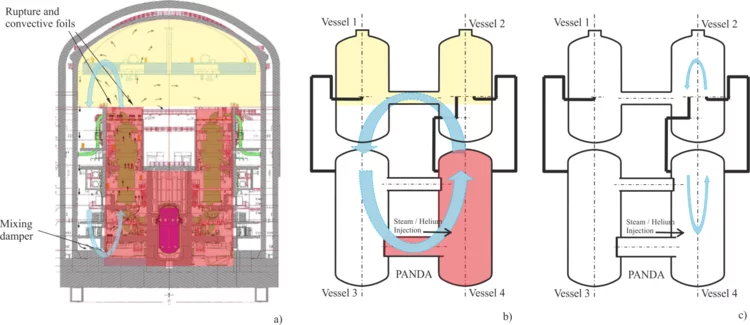Show filters
Analysis of a large-scale turbulent round jet
The entire study is an investigation into the self-similarity behavior [1] of first and second order statistical quantities derived from a large-scale jet flow taken from one of the experiments in the PANDA facility using the Proper Orthogonal Decomposition (POD).
What is presented, are the merits, the potential and the characteristics of the corresponding underlying POD analysis. Proper Orthogonal Decomposition (POD) is a mathematical framework to extract large-scale structures which are otherwise eventually masked by the complexity of the fully turbulent flow; example: the meandering of a jet which is not so obvious for the original data.
PANDA Large-scale Experiments addressing Complex Natural Circulation in a PWR two-room type containment
In nuclear safety analyses, the assessment of hydrogen release, distribution, and mitigation in the containment has high relevance, because under certain postulated scenarios, combustible mixture could form and hydrogen explosions could damage safety systems.
Safety analyses is carried out using advanced computational tools that have been assessed and validated through a variety of the analyses based experiments representative of the phenomena postulated in the containment and obtained in highly instrumented thermal-hydraulics facilities.
The OECD/NEA HYMERES project (www.psi.ch/en/teg/projects) was carried out to create an experimental database consisting in 24 PANDA tests and 9 MISTRA (CEA, France) tests devoted to phenomena with high relevance in nuclear safety. In two PANDA tests identified as HP6_1 and HP6_2) was investigated the effect of complex natural circulation in a PWR two-room type containment, on the hydrogen distribution, during postulated accidents [1]. The PANDA test specifications have been determined based on scoping analyses with the GOTHIC and APROS advanced computational tools [2].
Quality Management
NES Open positions
Current job openings in the PSI Center for Nuclear Engineering and Sciences





